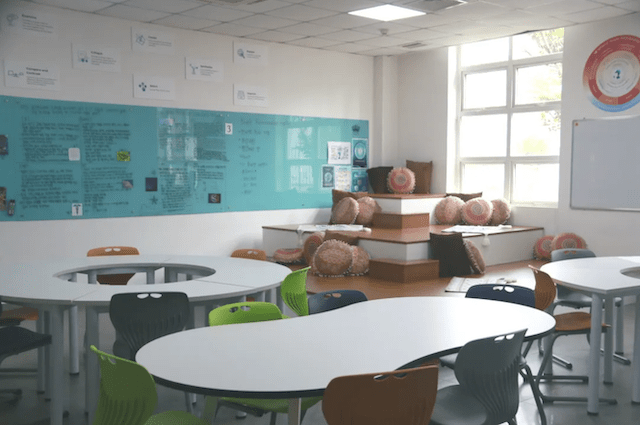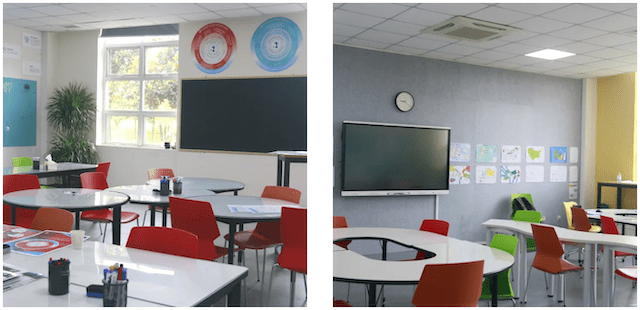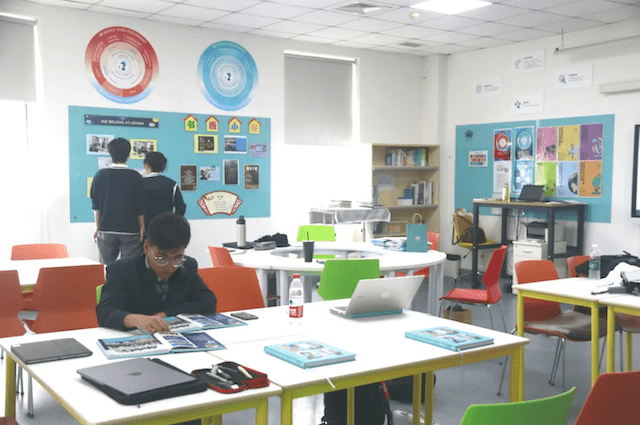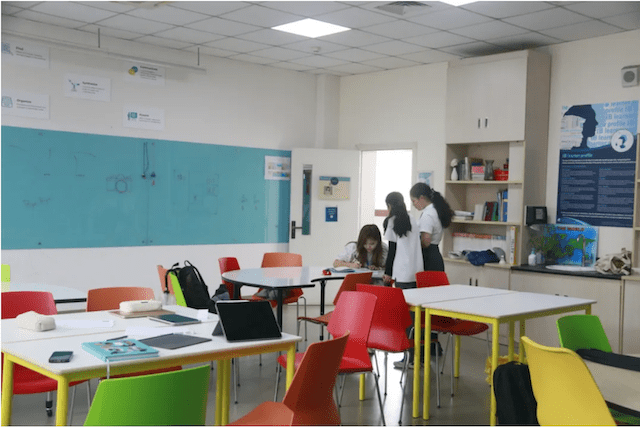We use cookies to improve your online experiences. To learn more and choose your cookies options, please refer to our cookie policy.
Open Days
Register for our Open Day


Classroom design is a crucial element in the educational experience, impacting student engagement, comfort, and learning outcomes. Traditionally, educators and architects have been the primary decision-makers in designing these spaces. However, at LIS, our perspective emphasises the importance of incorporating student voice in the design process. This approach not only aligns with contemporary educational philosophies but also fosters environments that are more attuned to the needs and preferences of the learners themselves.
Understanding Student Voice
Student voice refers to the inclusion of students' perspectives, opinions, and insights in decision-making processes that affect their educational experiences. This concept is rooted in democratic education principles, where students are viewed as active participants rather than passive recipients of education. By integrating student voice, at Leman, we aim to create more inclusive, responsive, and effective learning environments for our students, which result in better academic outcomes.

Enhancing Engagement and Ownership
We have seen that as a result of being involved in the design process, our secondary students feel a deepened sense of ownership and responsibility towards their learning environment, as well as a deeper sense of belonging. We have seen increased levels of motivation and participation in classroom activities and a sense of pride developing across the school as changes have been made in line with student views. Students have commented that after having a voice in the choice of colors, layout, and furniture of their classrooms, they feel more comfortable and invested in their learning spaces. We wholeheartedly believe that this sense of ownership can translate into better attendance, behavior, and academic performance.



Creating Responsive and Flexible Learning Spaces
Students, being the primary users of classroom spaces, have unique insights into what works best for their learning. We are teaching students about metacognition, and in turn let them tell us how they want to physically learn, as well as how they best think. Our new classroom designs are more adaptable and responsive to diverse learning needs. For example, students expressed a preference for flexible seating arrangements that allow for both individual work and group collaboration. So we installed desks that can fit together in a multitude of shapes and ways, as well as being separated out for individual work. Incorporating such elements has enhanced the functionality of our spaces and supports various teaching methods and learning styles. Engaging students in the classroom design encouraged our students to think creatively and critically about their learning environment. This involvement inspired innovative ideas and solutions that would not have emerged from a top-down approach.


Supporting Well-being and Comfort
The physical environments of our classrooms play a significant role in students' well-being and comfort, which are critical for effective learning. Factors such as lighting, temperature, acoustics, and ergonomics can significantly impact students' ability to concentrate and engage in their studies. By involving students in the design process, we have been able to identify and address specific environmental factors that affect their comfort. For example, some students highlighted their desire for quiet zones, more comfortable seating, and scented diffusers. Some students did also state a need for massage chairs...... however, we didn't go this far yet!

Promoting Equity and Inclusion
Throughout this process, we ensured that the needs and preferences of all students, including those from diverse backgrounds and with different abilities, were considered. By giving every student a voice, we hope that we have created more inclusive environments that cater to a wide range of needs, eliminating barriers to learning and ensuring that all students have the opportunity to thrive. A great example of this is table tops that can be written on- we have found that this has contributed to increased confidence in some students, who were otherwise reluctant to share written ideas on paper- as this offers a more flexible and erasable way to share ideas and change ideas as they evolve . As education continues to evolve, the importance of student voice in shaping the environments where learning takes place cannot be overstated.
student quotes:
Nicki G. Year 10
The new layout and furniture give us a perfect space for individual tasks and collaboration too. The new chairs add color and are vibrant, warm, and interesting. I like the way the spaces can adapt to the different styles of lessons our teachers give us.
Ila U. Year 10
Feels very modern and it makes the lessons more interesting the way we can adapt the space. The new stools in science are brilliant and support our backs whilst still being very comfortable. The classrooms feel vibrant and it makes lessons more enjoyable. Teachers feel more interactive and more accessible, and it feels more engaging in the lessons.
Jeremy L. Year 9
The new setup makes it more comfortable to work in. The way the spaces work makes it an excellent place to learn and we can adapt our environment. Playing a part in the design of the spaces made the student body feel valued and that we are one school working together to develop a space where both teacher and student can work together in. It was my idea for the writable classroom tables in Mathematics classes so I am pleased my design was used.
Angela K. Year 7
It's a really lovely change to the school and the learning environment. It makes the classrooms and the learning more interesting. The Korean class with the pyramid stage is my favorite classroom, but I also like the I and S room designs. I like the way the spaces adapt to what we're learning and we can have breakout spaces or work individually. Teachers feel more accessible now. I like it a lot.